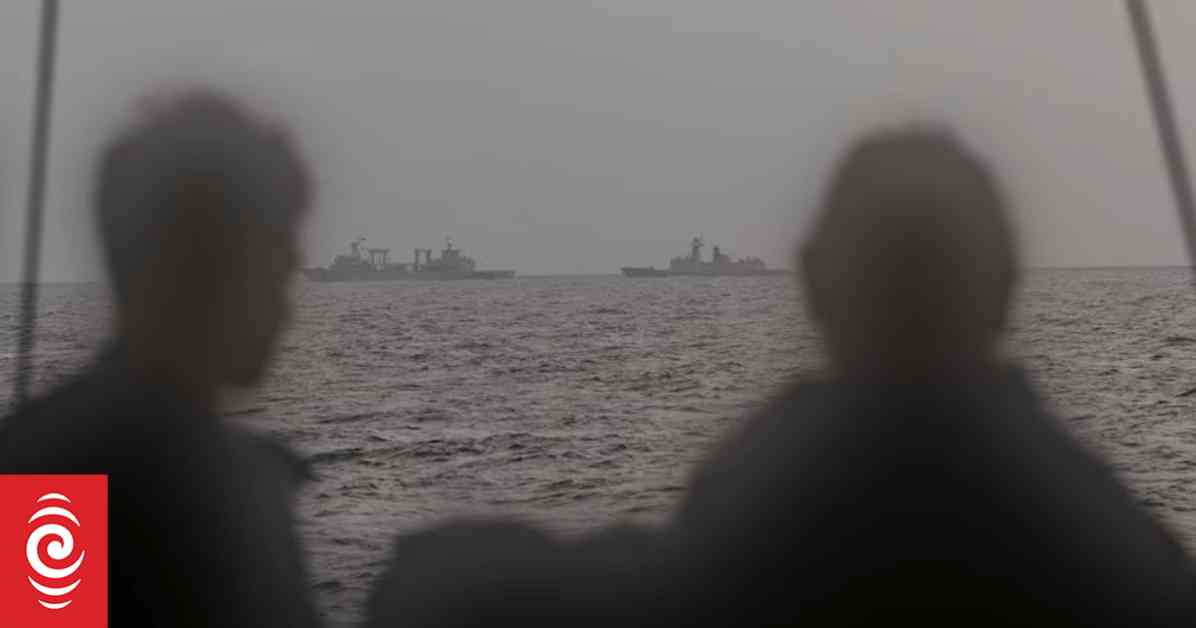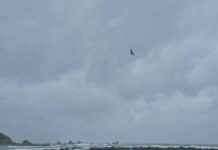Chinese Naval Vessels Activity in Tasman Sea Captivates International Attention
In a riveting turn of events, three Chinese naval vessels were recently spotted 150 nautical miles east of Sydney, causing a stir in the Tasman Sea. The New Zealand Defence Force, in collaboration with Australian authorities, is diligently monitoring a People’s Liberation Army – Navy (PLA-N) Task Group approximately 350 nautical miles northeast of Australia’s Bass Strait. This Task Group comprises the Jiangkai-class frigate Hengyang, the Renhai-class cruiser Zunyi, and the Fuchi-class replenishment vessel Weishanhu, which have been lingering off the Australian coast for over a week, as disclosed by the Defence Force.
Unveiling the Mystery: Why Are Chinese Naval Vessels Roaming the Tasman Sea?
Defense Minister Judith Collins shed light on the situation, emphasizing the lack of communication from China regarding their activities in the Tasman Sea. On Morning Report, Collins deemed this occurrence as “quite a significant event” and labeled it an “unusual move.” The suspense escalated on Friday when an Emirates flight from Sydney to Christchurch was advised by the Chinese military to steer clear of a specific airspace region, purportedly in conjunction with live-fire exercises conducted by the Chinese vessels.
Emirates Airbus A380
The tension surged as reports surfaced of the Chinese naval vessels engaging in live-fire exercises, deploying a floating target, adjusting formation, and resuming formation, indicative of a live-fire event. However, the confirmation of these activities remained ambiguous, with Defense Minister Collins and Australia’s Prime Minister Anthony Albanese maintaining reservations. Various airlines, including Air New Zealand and Jetstar, tactfully altered their flight paths to evade the contentious area, prioritizing passenger safety above all else.
Saturday’s Developments: Unfolding the Drama in the Tasman Sea
As the saga unfolded, the Defense Force disclosed that a vessel from the Task Group had broadcast a safety message signaling their intent to conduct live-firing drills on Friday, leading several commercial aircraft to divert course for precautionary measures. The intensity escalated on Saturday when the Task Group issued a second radio message outlining their plans for live-firing activities. Notably, personnel aboard the New Zealand Navy frigate HMNZS Te Kaha witnessed the Renhai-class cruiser executing live-fire exercises, adding another layer of complexity to the unfolding narrative.
Navigating Concerns: The International Response to Chinese Naval Activities
While security analysts and academics expressed apprehensions about the lack of transparency from China, Defense Minister Collins assured that there was no immediate threat to New Zealand. Notably, Euan Graham from the Australian Strategic Policy Institute highlighted the unprecedented nature of China’s live-fire exercises in the southern region, emphasizing the need for clarity and communication in such instances.
China’s Ministry of National Defence spokesperson Wu Qian vehemently refuted Australia’s assertions, emphasizing China’s compliance with international law and aviation safety standards. However, Australia’s Defense Minister Richard Marles underscored the importance of prior notification for such military activities to ensure the safety of all parties involved. Australia’s Foreign Affairs Minister Penny Wong engaged in diplomatic dialogue with China’s Foreign Minister Wang Yi, stressing Australia’s expectations regarding safe and professional military conduct, consular matters, human rights, and other pertinent issues.
As this captivating saga continues to unfold in the Tasman Sea, the international community remains on edge, awaiting further developments and insights into the motives behind China’s naval activities. Stay tuned for more updates on this evolving maritime drama.

















